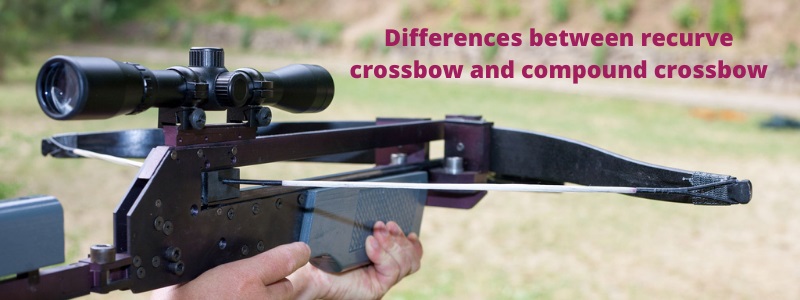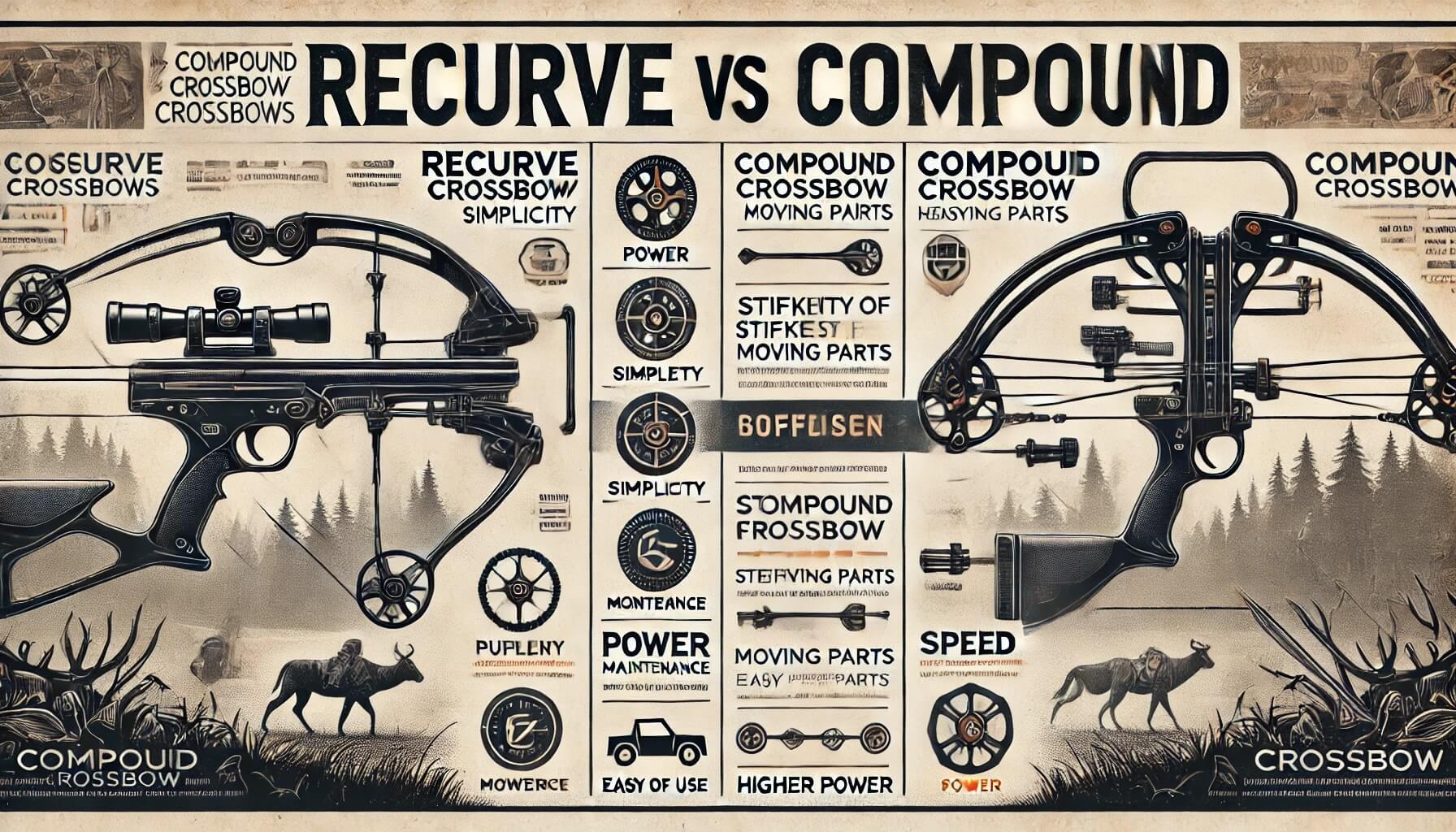Crossbows have been a crucial tool in human history, serving various purposes from hunting and warfare to sport and recreation. Over time, two main types of crossbows have emerged, each with its distinct design, mechanics, and advantages. Understanding the differences between recurve and compound crossbows is essential for individuals interested in archery, hunting, or target shooting.
Differences between Recurve and Compound Crossbow

Let’s uncover the intricacies of Recurve and Compound Crossbows, unraveling the mysteries behind their design and performance.
What is a Compound Crossbow?
A compound crossbow combines features of both the traditional crossbow and the compound bow. Like a traditional crossbow, it reduces the effort needed to draw the string, but it also increases arrow speed, similar to a compound bow.
Currently, compound crossbows are widely used for hunting, though some European countries restrict their use. They are also popular for target shooting. A compound crossbow has a draw weight of around 150 pounds, with projectile speeds reaching 350 to 420 feet per second (FPS). Arrows, or bolts, used in these crossbows are approximately 14 to 22 inches long and weigh between 30 and 35 grams.
What is a Recurve Crossbow?
As the name suggests, a recurve crossbow has inverted curves at the ends of the bow arms, without any pulleys. Distinct from traditional or compound crossbows, this model is significantly larger. With fewer moving parts, a recurve crossbow allows for easier string replacement. Equipped with a straightforward operating system, this crossbow lacks pulley cables, making it easier to maintain than a compound crossbow.
Recurve vs. Compound Crossbow: Key Differences
The pulley mechanism forms the main difference between a compound and a recurve crossbow. Pulley crossbows are generally oval or round and located at the end of the branches. For recurved crossbows, the string is immediately sealed to these branches.
The advantage of the pulley system is that it reduces the effort required to draw the string, similar to the principle of a hoist. This mechanism allows users to draw their crossbows more easily. The difference in power between a recurve crossbow and a compound crossbow is most noticeable in their performance.
The Power Required for Crossbows
Crossbows are classified by their draw weight, ranging from 50 to 260 pounds. This tension, once exerted on the string, can propel a bolt at a maximum speed of 130 meters per second. If you are considering a deer hunting trip, you will need a model that can reach at least 200 pounds. Both pulley and recurve models can achieve this power effectively. With such strength, a bolt can easily penetrate large game when aimed at a vital organ.
A muscular hunter can manually cock a crossbow with a draw weight of 150 pounds using a caliper. The pulley system allows manufacturers to reduce the required draw weight by 50%, making it easier to draw the string on high-powered crossbow models. Furthermore, the pulleys enable arrows to achieve very high firing speeds.
Difference in Power
The difference in power between recurve and compound crossbows is notable, with the compound model generally being more powerful. This increased power is attributed to the branches of the compound crossbow, which are significantly stiffer in the single-branch version and more flexible in the double-branch version compared to those of a recurve crossbow. This elasticity in the limbs donates to greater energy transfer when launching the bolt.
The pulley system also plays a crucial role in cocking the crossbow, making it easier to draw the string. Bolts of the same weight shot from a compound crossbow will achieve higher speeds than those fired from a recurve crossbow. It’s worth noting that the speed record for crossbow bolts is held by a bolt shot from a compound crossbow.
Difference From the Mechanical Point of View
From a mechanical point of view, a recurve crossbow is easier to use than a compound crossbow. This simplicity in the mechanism plays in favor of the operation of this crossbow. The recurve model does not feature any cables, as opposed to the pulley crossbow. This absence of cables makes maintenance easier, requiring no specialized tools for upkeep.
Indeed, if you break a shooting rope, for example, you can repair it yourself. This is not the case with a pulley crossbow. If you break your string, you will need an arch press, or find a bow with compression systems such as clamp, jack, or other hydraulic press, but also a specialized technician for the repair.
Difference From the Aesthetic Point of View
From an aesthetic point of view, recurve crossbows are longer than compound crossbows, and some models are removable with the string in place. This makes it easier to transport pulley models, unlike recurves. This small size also allows a compound crossbow to be easily handled in rather narrow places.
The new trend in crossbows is the development of ultra-compact models featuring large pulleys. One notable innovation is the reverse-bow design, first introduced by Barnett. Since then, major manufacturers like CenterPoint, TenPoint, and Ravin have embraced this trend, each releasing their own versions of ultra-compact reverse-limb compound crossbows. These models combine compact size with enhanced performance, catering to the needs of modern hunters.
Conclusion
As you can see, there is a significant difference between recurve and compound crossbows. However, each option offers distinct advantages in specific situations. I hope this guide has been helpful. To learn more about crossbows for hunting, I recommend visiting our website’s hunting section, which includes buying guides and product reviews to assist you in finding the right model for your needs.
